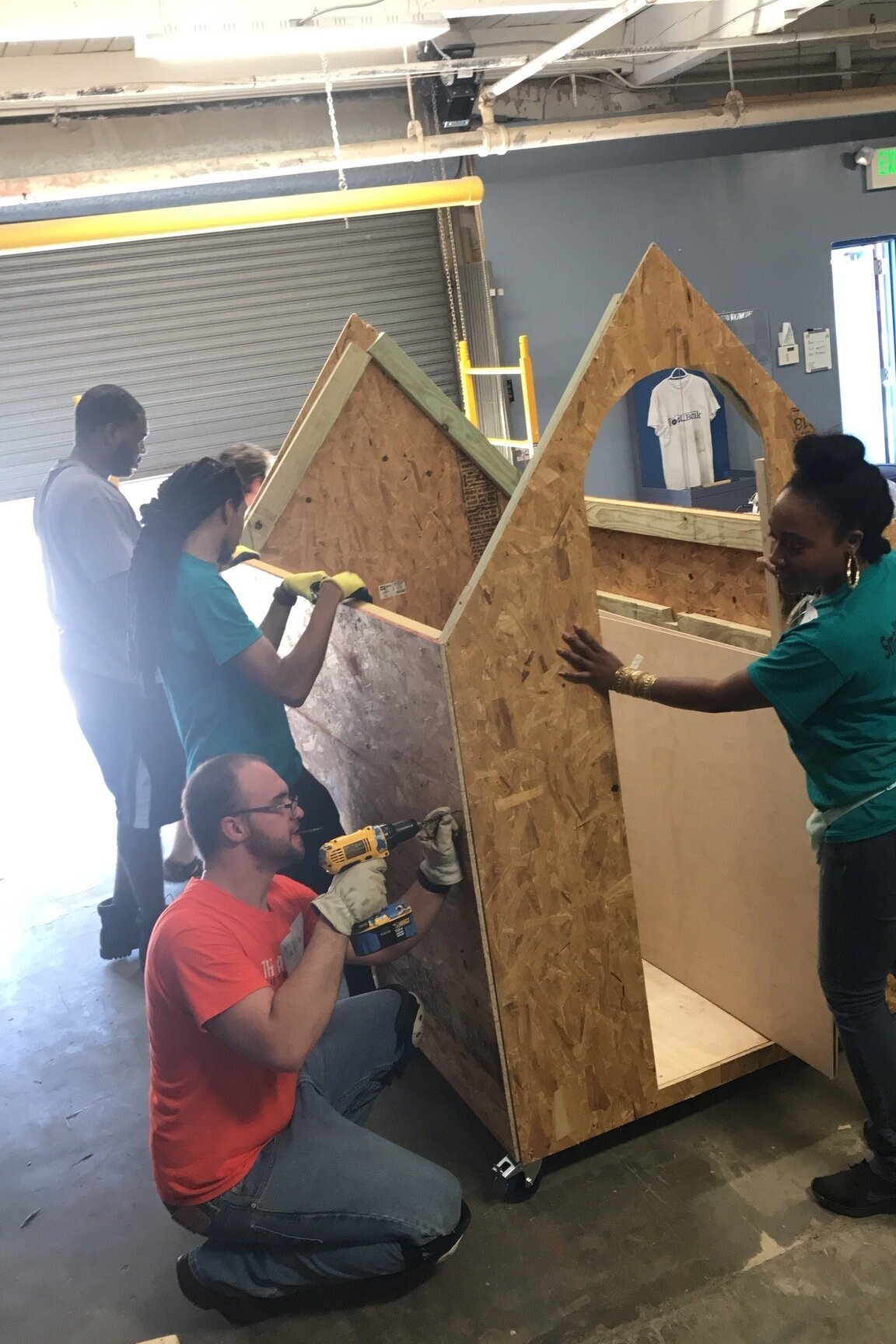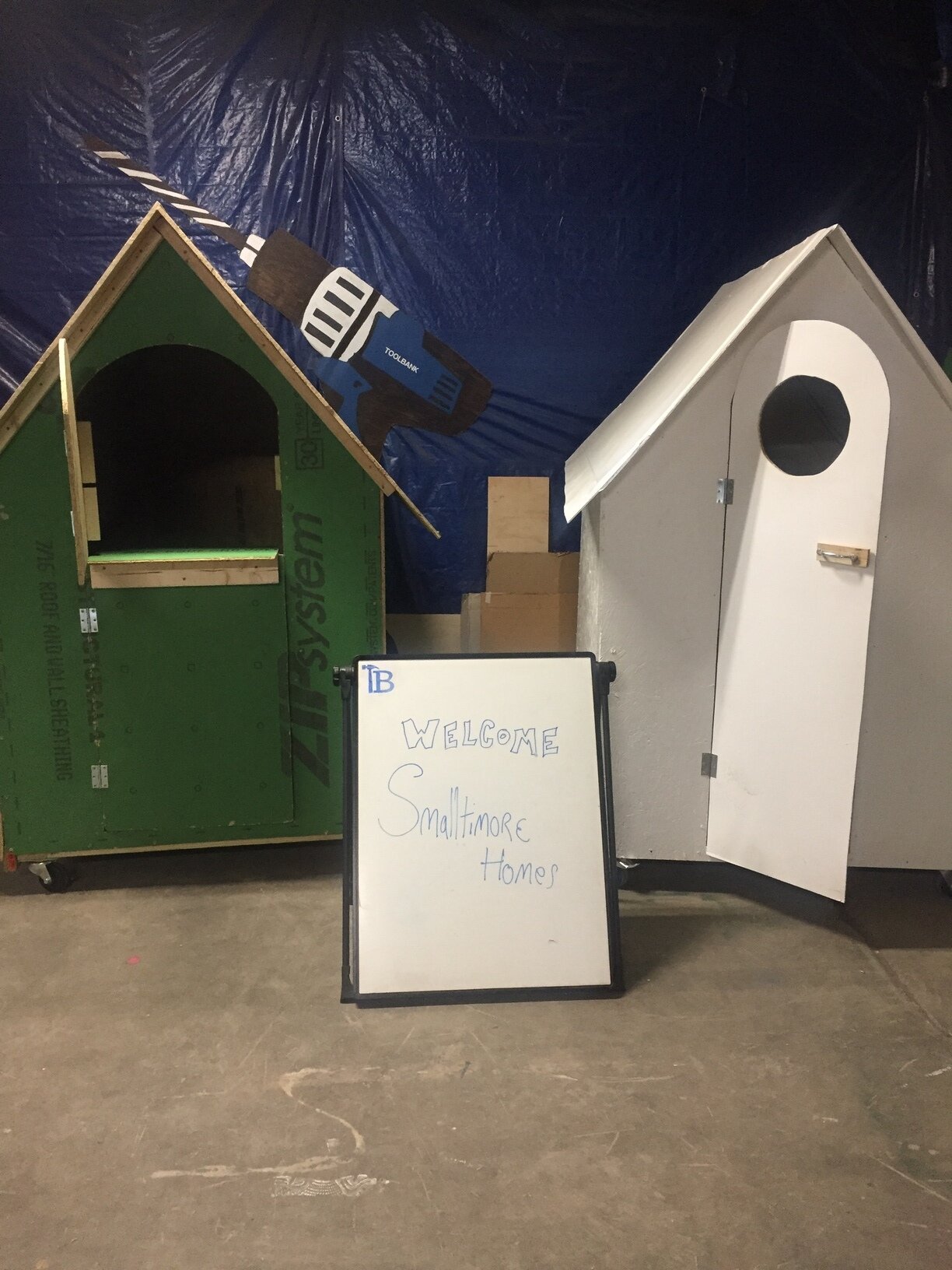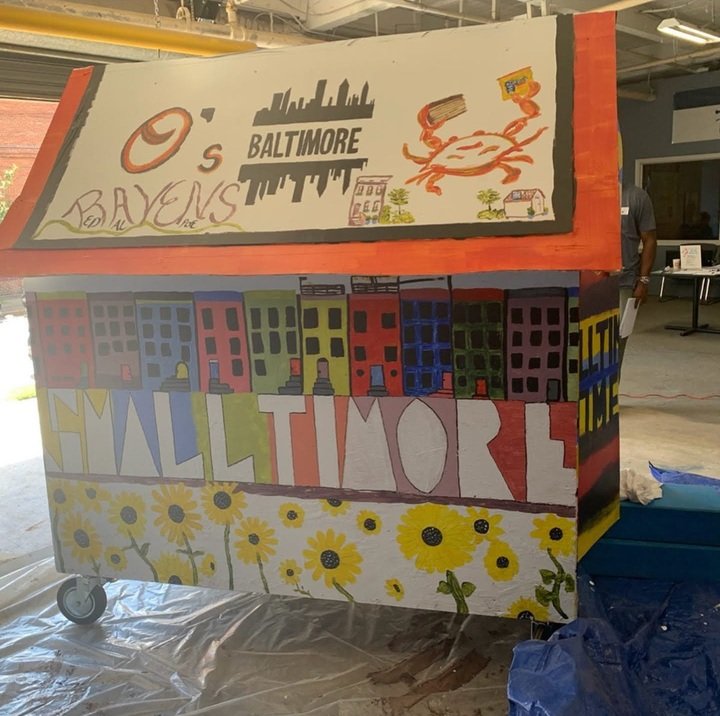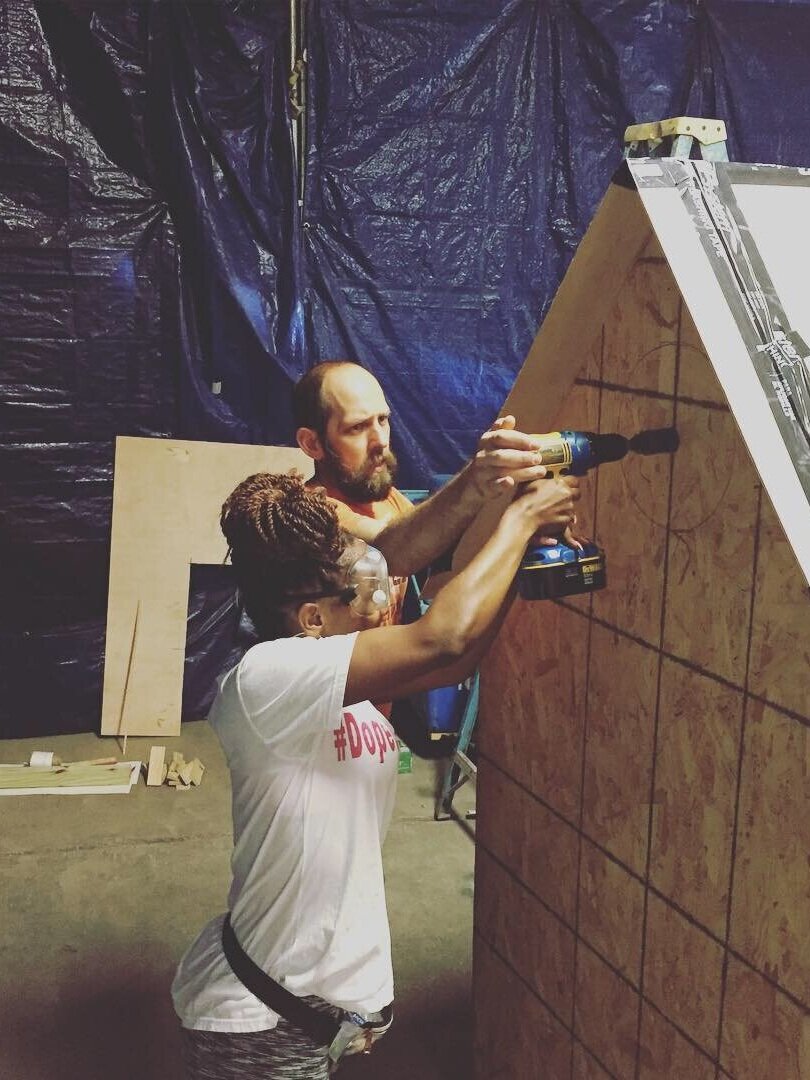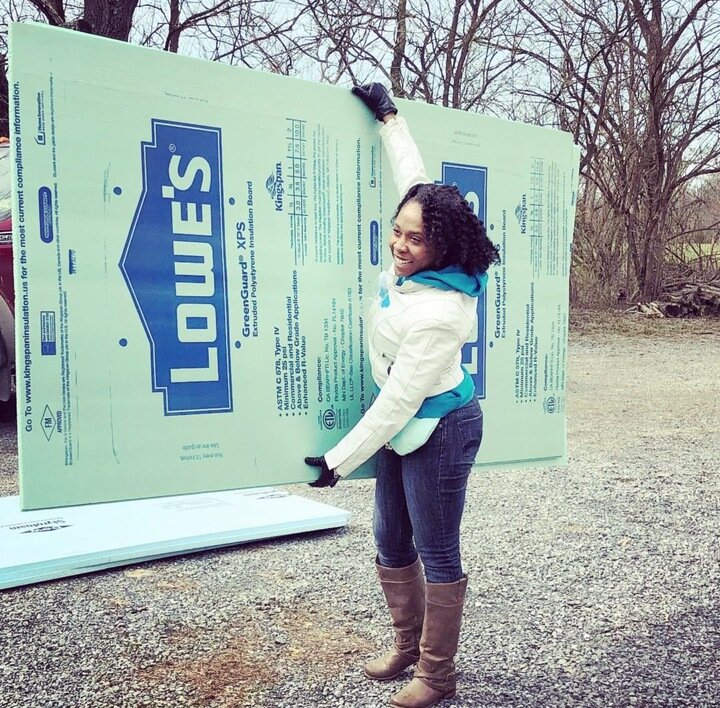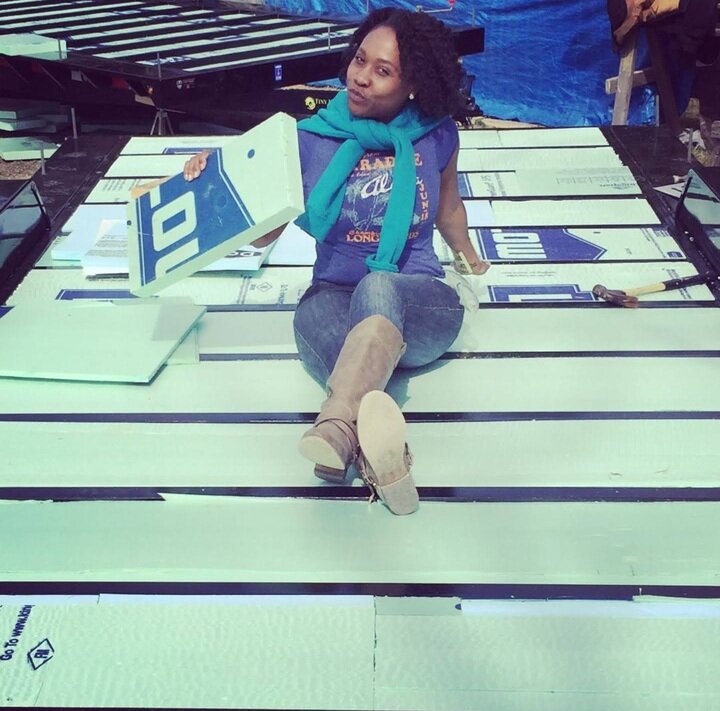LaQuida Chancey is on a Mission to End Homelessness in Baltimore
LaQuida Chancey, Founder & Director of Smalltimore Homes
LaQuida Chancey has lived in different states, and travelled around the world, but she calls Baltimore home because that’s where she feels she is needed. She’s pouring into the community she loves through her non-profit Smalltimore Homes, which offers micro-shelter and tiny home solutions to help reduce homelessness.
Baltimore is many things, according to LaQuida, and if you’ve ever visited the city, you know that to be true. Called Charm City by some and Bodymore by others, the city of Baltimore is generally considered a tough, largely Black city. In recent years, some of its problems have been on display, thrust into the media spotlight during the 2015 uprising, following the death of Freddie Gray, and again when it was maligned by a former president. Even popular TV shows through the decades (from cop drama Homicide Life on the Street, to the HBO miniseries The Corner, and the now classic and iconic show The Wire) illustrate its many and complex needs. So what compelled LaQuida, a successful real estate investor who believes that home ownership is one of the easiest ways to create generational wealth, to focus on the issue of homelessness?
“I feel like everybody else is kind of accounted for, you know what I mean? You can get crappy loans when you have a crappy credit score. You can get a grant because you make a certain amount of money. But you can't get any sort of permanent housing as a single person experiencing homelessness — you have to have a child or there's all these stipulations, and it just kind of rules out someone who could potentially be me, you know? So that's why [I chose] homelessness— starting with those who can't do anything for me and then moving upward.”
In 2018 LaQuida Chancey founded the non-profit Smalltimore Homes as her passion project. She funded the first two shelters herself in order to offer volunteers hands on, engaging work, and LaQuida says she was “super fortunate” to get a $10,000 grant from Team Depot.
The mission of Smalltimore Homes is to provide those living below the poverty level, specifically those experiencing homelessness, with micro shelter and tiny home solutions. Through partnerships, the villagers are provided supportive wrap around services and renewable energy sources, both made available as onsite amenities.
The Issue
On any given night 2,193 people are experiencing homelessness in Baltimore, according to the Baltimore City Continuum of Care's 2020 Point-in-Time Count Report. “Homelessness disproportionally affects Black Baltimoreans. While they represent 63% of the City’s population, Black or African-Americans accounted for 71% of all people experiencing homelessness in Baltimore City on the night of the PIT Count.”
Why do Black Baltimoreans experience housing insecurity at disproportionate rates? In a city with an estimated 15,000 vacant or abandoned buildings, LaQuida offers these thoughts,
“I feel like these things are all intentional - it's because of redlining, it's because of predatory lending practices, and I don't believe that it's by mistake. Four out of five of the people who are documented as homeless are Black. And I feel like with my knowledge, with my interests and passions, I can change the climate in Baltimore, and that's why I think Baltimore needs me.”
A Note on Language ~ Instead of using the word “homeless” to describe a person, use descriptions like “housing insecure or insecurity” to describe their situation. This language implies the oppressive consequences and systemic limitations that society places on certain populations, therefore causing unstable housing.
A homeless person is really a person experiencing homelessness.
The Visionary
Born in Manhattan, LaQuida and her family moved to Baltimore when she was in elementary school. “When people ask me where I’m from, I say Baltimore. That’s where I learned to drive, that's where I can tell you how to get somewhere, and that's where I graduated high school.” Excelling in school early on, there was no question if or where LaQuida would go to college. “My mother went to Spelman and all my life I knew I was going to go to Spelman.”
After graduating with a degree in Computer Science, LaQuida couldn’t find a job in Atlanta paying her what she thought she was worth, so she moved back home with her parents. “I definitely knew that my grandchildren's children would be paying back my student loans and that I absolutely had to get a career that supported all of this expensive knowledge.” She worked in the information technology field, moving up the ranks and leaving jobs when she knew it wasn’t a good fit.
“From the beginning, I kind of knew like, this ain't for me or this is for me,” she said. “And I've kept that attitude.”
LaQuida’s path to this work seems kismet. “I've had this weird obsession with like miniature things all my life,” she said. From her interest in tiny baby doll houses as a child to building tiny homes as an adult, things came together naturally, even down to the name. Smalltimore is a nod to both the size of the micro shelters LaQuida advocates for and the nickname she lovingly gave her city, where it feels like “basically a degree of separation between knowing people.”
I'm in Baltimore now because Baltimore needs me. And I recognize that and Baltimore needs loving and again, it has so much potential, and I'm there to pour back into my city.
The Vision
There is no one-size-fits all solution to homelessness. For her part, LaQuida sees tiny homes as a feasible affordable housing solution for Baltimore, even thought they are not yet considered legal dwellings in the city. She shares her vision with us and her community approach to attack this issue.
Where did you get this idea?
When I started the research about Tiny Homes and tiny home communities, I saw that there are a few organizations on the West Coast, that have existed for like 15 plus years, that are ending homelessness or contributing to a rapid eradicating homelessness this way. And I thought that it would be awesome to have something like that on the East Coast, right here in Baltimore.
How have people who may potentially use the tiny homes responded?
They are receptive and give me feedback. I've had a few people look at them and, more often than not, they want more headspace. Since receiving that feedback, I've worked with different groups of engineers to create a slanted roof rather than a pitch roof to take more advantage of the headspace and building them bigger so that they're closer to Baltimore's zoning code. Other people have said they could totally sleep in something like that or use it as storage, if the weather gets bad enough and they want to go to a shelter. In most shelters you can only bring a bag of clothing or a bag of anything. And if you live on the street very rarely do you see somebody with a single bag. I mean look at me, I have a place to live and I have three bags with me like - it's just kind of ridiculous.
Homelessness has been a pervasive problem for decades. Do you think we can end it?
No. I don't think that we can end it forever and always because homelessness is an onion - there are people with mental issues, there are people who have dealt with trauma, there are people who are not trusting of the system, and those who actually choose to live on the street, which, as far as I'm concerned, it's a very small percentage of people facing home insecurity. I do believe that everyone deserves shelter and should not be exposed to the elements year round, especially here in Baltimore, where we have a winter. One of those layers to the onion is that so many people don't have financial education, they're not financially fit, and therefore, find themselves often being evicted or housing insecure, and I think those issues can be addressed. I think that 90% of homelessness can be eradicated.
What is your short term plan?
Right now I am proposing to the city is that I have a Planned Urban Development (PUD) of maybe 20 - 25 units with a central kitchen and bathroom. This will help us eradicate housing insecurity for these 25 people or 25 families, depending on how big we build, and basically see what they love, hate or are indifferent about. Rinse and repeat.
Where do you see Smalltimore Homes in 5 years?
In five years, I will definitely have identified a piece of land and convinced Baltimore City that they need to support me and have many little Smaltimore PUDs all around for people to live in, I would say temporarily, because the idea is that they start in a micro shelter and they progress to a larger tiny house and whatever else they want to address. In the meantime, we're going to have many different demonstration plots, a much larger volunteer following, as well as a bigger funders and donations. I'm applying for grants on my own, as well as looking for donors who support the movement and understand the initiative.
How did COVID upend or change these plans and your work?
Initially, COVID changed our outreach project. Instead of building micro-shelters with volunteers, we began creating handwashing stations and handing out hand sanitizer and soap. But not long after that we were right back to building shelters. We transitioned to building larger "permanent" units (8x8) rather than building (5x7) units on wheels. We constructed multiple panels off-site, to be assembled on-site - like legos, specifically to replace tents. During this 10 week project, we assembled over 40 panels that were used to build (4) 8x8 shelters.
You grew up in the suburbs and now live in Baltimore City, in the very community where you work. How important was that to you?
It is very important to me because I feel like my passion and my drive may not be as strong if I'm not in the gutter, so to speak, to see what is going on. East Baltimore is a bit of the hood, and I'm okay with that. But I think I'm okay with it because I don't have to have children that have to go to school in that area. They don't have to suffer from the lack of taxes being paid because of all the vacant homes. I do believe that I would think way differently if I had children. So to my benefit, I don't have children and I can help to make the neighborhood better, on a small scale, but I believe that I am helping.
Mother’s Day 2019
How can people support your work?
You can donate on our website or fully sponsor a micro shelter for $2,250. The shelter would not only give someone a roof over their head but also help provide an outfit for their first interview and other toiletries and essentials like: a toothbrush, toothpaste, a waterproof book bag, personal solar panel for lights and electricity to charge your phone, and other items to help people acclimate back into what we consider normal life after they are given a tiny home.
Homegirl to Homegirl
Any advice for someone who wants to start a non-profit?
Start with figuring out how you're going to make money. With a nonprofit, typically you don't make money so to speak, or any money that you do make goes right back into the organization. In my case, I could have potentially started a social innovation as an S Corp, but I already have a for profit business investing in real estate in Baltimore. I went the nonprofit route so that I could take advantage of the tax exempt status and so I could apply for grants because otherwise a bunch of the money is coming straight out of my pocket.
Talk to like a CPA that's familiar with nonprofits and stay on top of all the tax stuff – report monthly if you can, but at the very least report quarterly.
Use free services from an organization called SCORE. I listen to their podcasts. I haven't used any of their services, but there are free mentorships. Start with a mentor - somebody who has done it before, or someone in the field who you want to model yourself after.
Volunteer (maybe with your mentor) a few times. Talk to the people who are on the ground and see how things run.
Network. I network everywhere I go. A lot of people have nonprofit organizations that they don't promote as heavily as I promote Smalltimore Homes.
Who are some of your Baltimore homegirls that you want to shout out?
My girl Tyde Courtney Edwards. She has a nonprofit called “Ballet After Dark.” She's a Black ballerina and she teaches women self-care, she does workshops and I love her.
My other girlfriend Brittany Harris who is the founder and owner of Many Hats One Crown, which provides girls with mentorship and offers professional development for youth.
Nneka Namdi, Founder of Fight Blight Bmore - she’s amazing.
And Bree Jones of Parity Homes, is doing amazing revitalization work in West Baltimore.
How do you stay motivated?
I'll be honest, I actually don't stay motivated, it's fleeting at times. But I continue to call-in, continue to answer the phone, help the community and show up when and where I can. As for motivation, I find myself sometimes needing to remind myself of why I started Smalltimore and knowing that this vision is bigger than me. There's no way I can selfishly stop this mission because it gets hard, or feels impossible. Knowing this was the plan all along, and that God has me, My Tribe has me, and the Universe has me - even when I'm learning the hardest lessons. I'm able to think about how far I've come, and how absurd it would be to give up now.
Checking my mental health has been really important, too. Knowing, that if I need to rest today, I should rest today, and if I need to rest tomorrow too, I need to consider that. Without feeling guilty, or less-than, we are human - I am not a robot. There has to be a balance, and that's what COVID has taught me, dealing with so much sickness, violence, and death on a global and personal scale was heavy for me. I realized that I was suffering from cape syndrome, trying to save everyone and control everything, and when I couldn't it felt like a failure, and needed to STOP.
For updades on LaQuida’s work with Smalltimore Homes, including upcoming projects, volunteer opportunities, and news, follow the journey on Instagram.





